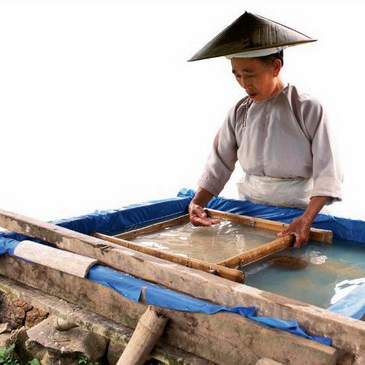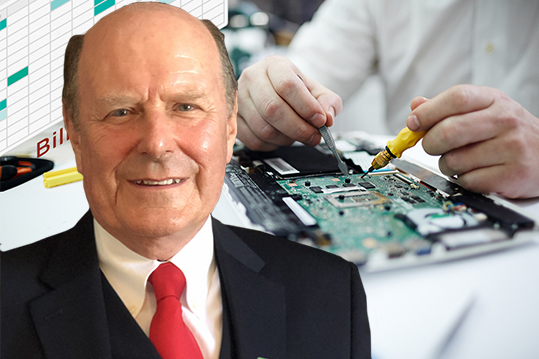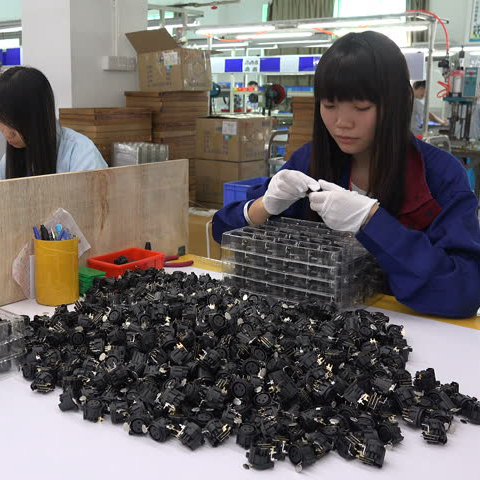China’s Long History of Innovation Leadership
China only joined the World Intellectual Property Organization (WIPO) in 1985. Some, when learning of this, are surprised and that’s because in the West can trace back the origins of patents at least 2,500 years ago to the City of Sybaris, originally part of Ancient Greece and now part of southern Italy.
The elders of the city granted protection rights to anyone who “invented” something of a luxury. Usually recipes for meals or refreshments. The inventor would get exclusivity for a year and therefore have a short-term monopoly to exploit, but the inventor had to lay open the exact process, ingredients and steps for all to see.
The question is why did it take China so long to join the WIPO? Was it that they were not inventors or was it more to do with the open culture and the way in which totalitarian rule decided how the civilization should be controlled?
 Throughout history, the Chinese have been recognized as prolific inventors: gun powder, the compass, paper, print and so on. So, this is not the reason. The fact is that the through the ages the ruling dynasties didn’t believe that useful inventions should be monopolized for the financial benefit of a few when the masses could benefit from the new modern technology.
Throughout history, the Chinese have been recognized as prolific inventors: gun powder, the compass, paper, print and so on. So, this is not the reason. The fact is that the through the ages the ruling dynasties didn’t believe that useful inventions should be monopolized for the financial benefit of a few when the masses could benefit from the new modern technology.
 Cai Lun is said to have invented paper in China more about 1,914 years ago. He decided to use plant fibers in his process resulting in a thinner, whiter parchment that when dried and cut created a perfect substrate for painting, printing, drawing, writing, flying (kites) and a host of other uses. He took his invention to the emperor, who decreed that every village should be taught how to make it so that the greater population could benefit. No patent, no exclusive period for exploitation, just a decision to allow the people to benefit. Lai received perhaps the greatest reward of all in being known as the inventor of paper for eternity.
Cai Lun is said to have invented paper in China more about 1,914 years ago. He decided to use plant fibers in his process resulting in a thinner, whiter parchment that when dried and cut created a perfect substrate for painting, printing, drawing, writing, flying (kites) and a host of other uses. He took his invention to the emperor, who decreed that every village should be taught how to make it so that the greater population could benefit. No patent, no exclusive period for exploitation, just a decision to allow the people to benefit. Lai received perhaps the greatest reward of all in being known as the inventor of paper for eternity.
As with most inventions, there is no such thing as an original thought. Someone somewhere has had the same thought, taken past technologies and inventions and made them better, faster or cheaper. Lai was certainly aware of papyrus parchment used by the Egyptians 2,000 years before. He improved it, used what was local and made history. Today a sheet of paper goes a long way, has thousands of uses and costs about half a cent. You will find it in every corner of the world and it goes down as one of man’s most successful inventions. A bit like the wheel or fire.
Had paper been invented in modern times in the West, no doubt it would have been patented and exploited and far less successful. It is not a stretch to envision a paperless world many decades ago since the need to have a substrate to draw or write, upon is universal. Paper’s success as an intrinsic part of global life for almost 2,000 years prevents the newer patented technologies which are already here, from creating the paperless world. The entry cost is simply too high compared with half a cent, and of course, you need a source of power. No batteries needed to read a sheet of paper. By the way, did I mention you can use both sides, recycle it, screw it up and throw it in the wastepaper basket only to be able to retrieve it, flatten it out, and use it again? What an invention! We won’t see a paperless society any time soon.
 China was a late starter to patents. The U.S. led the world in patent filings, double that of European countries for many, many decades. Now the table has turned. The Chinese file more patents than any other country. Three times as many as the U.S. who are now in second place. Now China wants to protect its own technologies as it morphs from a replicator of products invented elsewhere to a technology-driven economy leading the world into the future. The sleeping giant has awakened. In 1979, Deng Xiaoping declared an open policy for China. “To be rich is beautiful,” he declared. The West was quick to exploit the cheap labor and moved production from Taiwan and Hong Kong to lower-labor-cost Chinese factories. Chinese government-supported, state-owned enterprises, giving land and money for building factories filled with German-made machines.
China was a late starter to patents. The U.S. led the world in patent filings, double that of European countries for many, many decades. Now the table has turned. The Chinese file more patents than any other country. Three times as many as the U.S. who are now in second place. Now China wants to protect its own technologies as it morphs from a replicator of products invented elsewhere to a technology-driven economy leading the world into the future. The sleeping giant has awakened. In 1979, Deng Xiaoping declared an open policy for China. “To be rich is beautiful,” he declared. The West was quick to exploit the cheap labor and moved production from Taiwan and Hong Kong to lower-labor-cost Chinese factories. Chinese government-supported, state-owned enterprises, giving land and money for building factories filled with German-made machines.
Thousands upon thousands of companies began producing whatever the Western consumer needed. A typical worker would work six days a week at ten-hour shifts, sleep in dormitories holding up to 16 people to a room for about $160 a month in pay. Today it is a little different. Dorms give way to high-rise apartment blocks for workers, salaries have quintupled, the pedal bikes have given way to motor cars to a point where there are so many cars, it is quicker to use a pedal bike. Infrastructure investments over the years have built good highways, fast “bullet” trains up and down the country, the world’s longest bridge from Hong Kong to mainland China, and space landings on the dark side of the moon. The small towns have become new cities, the skyscrapers fill the horizon and the pace of change is phenomenal. What’s next?

China achieved in a decade what it took the British 150 years to accomplish in the industrial revolution in order to bring people out of abject poverty. It hasn’t happened by chance. Every step has been carefully planned and thought through. China has a 50-year plan, it has patience, it is determined and it sits on three trillion in U.S. dollars. It has invested much back into the US, prompting Warren Buffet to say, “Whether we like it or not, we all work for the Chinese.” The Chinese consumer market is now growing fast, they have plenty of money and there is nothing they won’t buy. They now have more millionaires than the U.S. and Prada, Channel, Dior, Louis Vuitton, Rolls Royce and Bentley are all selling more in China than any other marketplace. Chinese workers now get more paid time off than a typical US worker. GDP value in China is now nearly 20 percent of the world economy, and sets China on a course to be world’s biggest economy soon, taking the top spot from the U.S. When this happens, it will signal the first time that a “developing country” nudges a leading “developed country” to the sidelines. China will want its say on the world stage, the West will not be happy about it. The world is being all shook up, as Elvis used to sing.
I figured out a long time ago that you can’t compete with China, so run toward it and see what it can do for you.
The Chinese ideology of building “cluster” cities to dominate world markets in one government supported area is something not replicated in the West, but it has huge benefits and impact. Sock City, located in Datang, Zhejiang Province, dominates the world sock markets producing 19 billion pairs a year, Shenzhen dominates the world electronics’ markets and Zhuhai dominates the world’s cartridge consumable markets with more than 600 companies located in and around the city. Zhuhai is not going away. It is impacting the global marketplace. It produces a range of qualities, very poor, poor, not so bad, ok, pretty good, very good, outstanding and excellent. Some world class companies produce the best, patent-safe compatibles that fully comply with E.U. and U.S. regulations at prices far below a remanufactured cartridge price. These world-class companies will continue to grow while patent infringers will get sued and forced out and poor quality companies disappear as they lose customers.
China is a dominant force in our industry. There is the worst and the best there. There is as much fear for them doing business with the West as the West is fearful of doing business with them. But it is the place to do business if you want to survive and prosper in the year of the pig.







Leave a Comment
Want to join the discussion?Feel free to contribute!